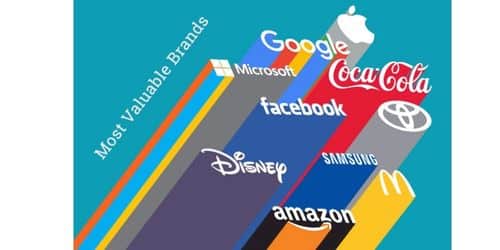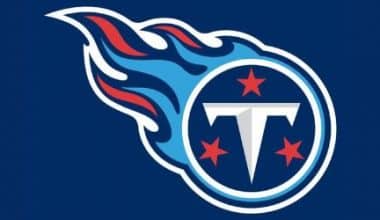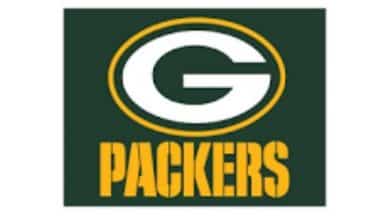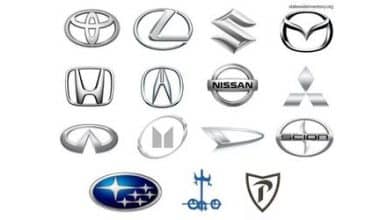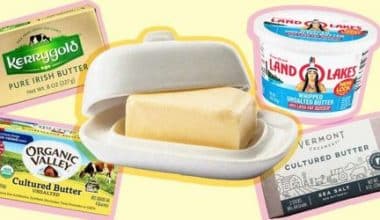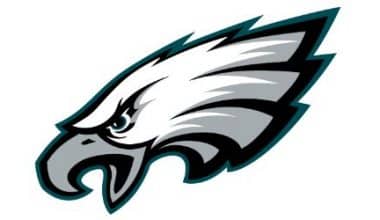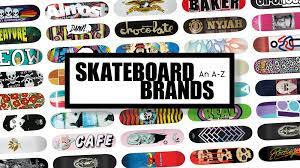According to a survey, Apple, Google, and Amazon are among the most valuable brands in the world in 2023.
Thus, Apple, which now ranks first in the Kantar BrandZ Most Valuable Global Brands 2023, is on its way to becoming the first trillion-dollar brand. The brand’s worth hit 947.1 billion dollars.
Apple distinguishes itself with its high level of diversity and ongoing diversification of its hardware, software, and services portfolio.
Google is the corporation that comes in second and is one of the fastest-rising valuable brands in the rankings. The IT titan increased the worth of its brand by 79% to $ 819.6 billion. Google’s collection of office work and productivity tools has made it an indispensable part of customers’ lives all around the world.
The aggregate value of the top 100 valuable brands in the world has climbed by 23% in the last year, to $8.7 trillion dollars.
This year, 37 brands have improved their rankings. More than three-quarters of brand value will be generated by US corporations by 2023. Media and entertainment, business solution providers, technology, and retail brands account for more than half of the top 100 most valuable brands of the total value.
Top Ten Most Valuable Brands in the World In 2023
- Apple
- Amazon
- Microsoft
- Tencent
- McDonald’s
- Visa
- Alibaba
- Vuitton Louis Vuitton
Let’s look at the top three valuable brands in the world in 2023.
#1. Apple
Apple maintains its lead with a record valuation.
The brand has kept its title as the most valuable brand in the world, with a 35% increase to US$355.1 billion, the highest brand value ever recorded in the Brand Finance Global 500 list.
Apple had a spectacular 2021, capped off with becoming the first business to reach a market worth of $3 trillion at the start of 2022. Historically, the company’s success was based on honing its core brand positioning, but its current rise can be ascribed to the company’s awareness that its brand can be effectively applied to a much larger range of services.
The iPhone continues to account for around half of the brand’s sales. This year, however, Apple focused more on its other products, including a new generation of iPads, a revamp of the iMac and the debut of AirTags. Its suite of services, which includes everything from Apple Pay to Apple TV, has grown in importance to the brand’s success.
Furthermore, Apple understands the value of staying in touch with its customers in order to sustain brand equity. Privacy and the environment are important issues, and Apple demonstrated its commitment to both. This is evident by increased transparency in the App Store’s privacy policy, which reinforces customers’ trust in the brand, and the statement that more of Apple’s manufacturing partners would switch to 100% renewable energy as the business strives to achieve carbon neutrality by 2030.
Apple has incredible brand loyalty, owing largely to its reputation for quality and innovation. Decades of hard labor have resulted in Apple becoming a cultural phenomenon, allowing it to not only compete but thrive in a wide brand of markets. With rumors of its push into electric vehicles and virtual reality circulating, it appears it is ready for a fresh jump.
#2. Amazon
Amazon and Google also experienced strong growth, maintaining their positions in the Brand Finance Global 500 rankings, trailing Apple in second and third place, respectively. So, Amazon followed Apple in passing the US$300 billion threshold for brand value, increasing 38% to US$350.3 billion while navigating global supply chain challenges and a labor shortage. It has hired 133,00 new employees since June 2021 and recently announced intentions to hire an additional 125,000 hourly workers in anticipation of continued expansion.
Amazon prioritizes logistics, building its own end-to-end supply chain with a growing fleet of trucks, vans, and planes. The brand has invested an estimated US$80 billion in its logistics sector between 2020 and 2021, compared to a total of US$58 billion in the preceding five years.
#3. Google
Google’s brand worth increased by 38% to US$263.4 billion. The brand relies on advertising for the great bulk of its revenue, and it was harmed at the onset of the epidemic when advertising expenditure fell owing to uncertainty. However, as the world adapted to the new normal and people spent more and more time online, advertising budgets reopened and Google’s company recovered, resulting in a healthy increase in brand value.
Which product line brings in the greatest revenue?
In 2023, Apple’s brand was worth an estimated $355.1 billion, making it the most valuable in the world.
Which enterprise has the strongest brand?
WeChat was named the strongest worldwide brand in 2023 based on evaluations of parameters including marketing expenditure, brand effectiveness among customers, workers, and stakeholders, and impact on business operations. Coca-Cola, an American soft drink company, came after the Chinese multi-purpose app.
Valuable Brands with the Fastest Growth In 2023
#1. Tik Tok
TikTok is the fastest-growing brand in the world in 2023, driving the media revolution.
TikTok is the world’s fastest-growing brand, with its brand worth tripling in the last year. The entertainment app’s brand worth has soared by an amazing 215%, from US$18.7 billion in 2021 to US$59.0 billion this year. It is the highest new entrant to the Brand Finance Global 500 2022 list, ranking 18th among the world’s top 500 most valuable brands.
With COVID-19 limits in place around the world until 2021, digital entertainment, social media, and streaming services experienced steady expansion, and TikTok’s popularity demonstrates how media consumption is changing. The app’s popularity grew because of its easy-to-digest and amusing content; nevertheless, it also served as a creative outlet and a method for individuals to connect during the lockdown.
Simultaneously, smart collaborations, such as TikTok’s sponsorship of the UEFA Euro 2020 tournament, exposed TikTok to demographics other than its original Gen Z audience. In 2021, it surpassed one billion users and became the top downloaded app on both Android’s Google Play store and Apple’s App Store.
Throughout the COVID-19 epidemic, media consumption has increased, but the way we consume it has irreversibly changed. To compete in this changing industry, media companies have made significant investments in their brands, from content acquisition to user experience. TikTok’s spectacular rise is proof that the brand has gone from relative obscurity to international acclaim in a matter of years and shows no signs of slowing down.
#2. Snapchat
Overall, media brands account for three of the top three fastest-growing valuable brands in the world in the ranking, with Snapchat (brand value up 184% to US$6.6 billion) and South Korean internet brand Kakao (brand value up 161% to US$4.7 billion) trailing TikTok. Snapchat’s daily usage and income climbed by 77% in the first nine months of 2021, thanks to the popularity of its short-form video feature, Spotlight.
Other notable performers in the media sector include those that provide streaming services, such as Disney (up 11% to US$57.0 billion in brand value), Netflix (up 18% to US$29.4 billion in brand value), YouTube (up 38% to US$23.9 billion in brand value), and Spotify (up 13% to US$6.3 billion in brand value).
Traditional media brands, on the other hand, have experienced a steady decrease, with people increasingly preferring social media platforms and on-demand streaming in their place. This year, Warner Bros. is one of the fastest-falling brands in the ranking (brand value down 33% to US$6.8 billion), and this tendency is much more pronounced when compared to pre-pandemic valuations. Looking at brand value change over the previous two years of COVID-19, three media brands are among the five fastest-falling brands, with Warner Bros losing 40% of its brand value, NBC (brand value US$9.4 billion) losing 38%, and CBS (brand value US$7.4 billion) losing 36%.
What is the most valuable luxury brand?
LVMH (Louis Vuitton Moet Hennessy) is the world’s most valuable luxury brand, with a brand value of around 124.3 billion US dollars in 2023.
Industry’s Most Valuable Brands In The World In 2023
#1. Tech Industry
Technology is still the most valuable industry in the world in 2023.
With a total brand worth of about US$1.3 trillion, the technology industry is once again the most valuable in the Brand Finance Global 500 ranking. Technology brands have become more valuable in the modern world, a trend worsened by the COVID-19 pandemic.
The list includes 50 tech brands; nevertheless, the brand value is mostly attributed to three major firms, with Apple, Microsoft (brand value US$184.2 billion), and Samsung Group (brand value US$107.3 billion) accounting for more than half of the overall brand value in the sector.
Following a 29% increase to US$71.2 billion, Huawei reclaimed its place among the top ten most valuable brands in the world. The US sanctions had a significant impact on Huawei’s smartphone industry, but the company responded positively by significantly increasing investment in both domestic technology businesses and R&D, as well as shifting its focus to cloud services.
The IT industry is also home to two of the top five fastest-growing valuable brands in the ranking, with semiconductor brands AMD (up 122% to US$6.0 billion in brand value) and Nvidia (up 100% to US$16.0 billion in brand value) also seeing significant growth. Due to a growth in gaming, cryptocurrency mining, and artificial intelligence, as well as a global chip supply shortfall, demand for both brands’ goods remained high throughout the year, resulting in higher sales.
#2. Retail
The retail industry has firmly established itself as the second most valuable in the Brand Finance Global 500 list, having surpassed the $1 trillion mark for the first time.
Prior to the pandemic, retail was the third most valuable sector, trailing only banking, but an increase in e-commerce has seen it edge ahead, while banking has stayed static. Retail was the fastest-growing large industry in the Brand Finance Global 500 ranking during the pandemic, with a 46% increase in brand value, beating the IT and media sectors, which rose by 42% and 33%, respectively.
This year, Walmart, one of the sector’s top performers, continues to enjoy brand value growth and returned its spot in the top 5, jumping from sixth to fifth place thanks to a 20% increase in brand value to US$111.9 billion.
Walmart already had a strong physical presence, and it invested in its e-commerce capabilities at the onset of the pandemic, which has paid off. It increased the use of technology to select and pack customers’ online grocery orders in anticipation of continued demand for pickup and delivery after the pandemic.
Retail also had the newest entrants in the valuable brands ranking this year, with nine brands, accounting for nearly one-quarter of all new entrants. The majority of the new retail brands are supermarkets, many of which have adapted to the new normal by increasing their accessibility through online shopping and click-and-collect. The highest ranked of the nine is Germany’s Edeka, which enters the ranking at 340th place with a brand worth US$6.5 billion.
Read Also: Amazon vs Alibaba: Differences, Models, Revenue, Cash-Flow, Similarities
The initial perception of the lockdown was that retail would suffer, but those who have demonstrated the agility to adapt and use technology have impressed with strong gains. The industry’s change to meet the changing needs of its clients has sown the seeds of both short- and long-term prosperity.
Home Depot, the third-largest retail brand behind Amazon and Walmart, performed well throughout the COVID-19 epidemic and continued to show positive brand value growth this year, up 6% to US$56.3 billion. When COVID-19 limits were implemented, the brand’s revenue increased as individuals spent more on home remodeling. However, as the economy recovered and restrictions were lifted, Home Depot’s year-on-year revenue growth slowed in 2021, indicating that this pattern is unlikely to continue.
Despite the sector’s general prosperity, retail is home to the ranking’s fastest-falling brand. Alibaba.com defied the trend, reducing its brand value by 42% to US$22.8 billion. The brand was accused of abusing its market dominance by prohibiting merchants from utilizing other e-commerce sites, and later regulatory changes exposed it to additional competition, resulting in slower development and a financial collapse.
#3. Pharmaceuticals
Pharma brands are experiencing good growth.
Pharma brands have been in the spotlight since the outbreak began, as the world has turned to the industry for COVID-19 tests and vaccines. As a result, predictably, the industry has grown faster than any other in the Brand Finance Global 500 during the last two years. The number of pharmaceutical brands in the ranking has more than doubled, from four to eight, with brand value growing by 94% to $54.0 billion.
All eight featured brands are more valuable than they were in 2020, with those producing COVID-19 immunizations enjoying the greatest rise. Johnson & Johnson is the most valuable, with a 24% increase in brand value to US$13.4 billion. AstraZeneca, a new entrant to the ranking, gained the title of fastest-growing industry, with a spectacular 77% increase in brand value to US$5.6 billion, followed by Pfizer as the second fastest-growing at 58%, boosting its brand worth to US$6.3 billion.
The development of effective vaccinations has been critical in reviving the world economy. This has resulted in not only increased profits but also improved global visibility and reputation for pharmaceutical brands, raising intriguing issues about their potential use in adjacent industries.
Looking ahead, a significant brand change in the sector is envisaged as a result of the trend of separating pharmaceutical and consumer health divisions, as Johnson & Johnson and GlaxoSmithKline are now doing. Understanding the strengths and value of each component of the brand will be critical to retaining the substantial brand equity that has been built up in the merged business.
#4. Tourism
Tourism brands are showing signs of improvement.
The overall brand value of the tourism industry is still lower than pre-pandemic assessments, exacerbated by a drop in the number of brands featured in the Brand Finance Global 500 from 15 to 9. However, all of the brands from the industry that do appear in this year’s ranking have witnessed positive brand value growth, which is an encouraging indicator of recovery.
The hotel industry grew at the quickest rate, with Hilton (up 58% to US$12.0 billion) and Hyatt (up 26% to US$5.9 billion) becoming more valuable than they were before the pandemic. As lockdown requirements were relaxed, the sector benefited from an increase in staycations and leisure travel, as well as a limited return of business travel. At the same time, both companies have continued to invest in their brands, with Hyatt completing its acquisition of Apple Leisure Group and Hilton opening 96 properties in the third quarter of 2022.
Delta (US$7.3 billion), American Airlines (US$6.3 billion), United Airlines (US$5.5 billion), Emirates (US$5.0 billion), and newcomer Southwest Airlines (US$4.9 billion) all saw an increase in brand value as international and domestic travel increased, though none have yet recovered to pre-pandemic brands. The same may be said for online booking sites booking.com (US$8.7 billion) and vehicle rental company Enterprise (US$7.1 billion).
Despite sporadic restrictions in place around the world, the rebound in the tourism sector is an encouraging sign. The recovery was undoubtedly hampered by variant outbreaks, but as the world adjusts to living with COVID-19, there is no reason why the tourism business cannot take off again.
Countries with the Most Valuable Brands in the World
The United States and China continue to dominate.
When results are broken down by nation, brands from the United States and China continue to dominate the Brand Finance Global 500. The two countries account for more than two-thirds of the total brand value in the ranking, with the US accounting for 49% (US$3.9 trillion) and China accounting for 19% (US$1.6 trillion).
The difficulties in the real estate sector have hindered China’s brand value growth. Six of the top ten fastest-falling brands in the ranking are Chinese real estate enterprises, while Evergrande has fallen out entirely from the Brand Finance Global 500.
At the same time, Chinese brands have made significant achievements, defying the global trend of negative growth in the industry. BYD (brand value US$6.4 billion) is the sector’s fastest-growing brand, with a 100% increase in brand value. The brand focuses on electric vehicles, a fast-rising market in China, with sales increasing by 232% in 2021 to about 600,000 units sold. Haval (brand value US$6.1 billion) is the sector’s second-fastest growing company, increasing at a rate of 55%.
The brand with the Most Valuable Brand Title – WeChat
WeChat maintains its position as the world’s most powerful brand.
Brand Finance, in addition to determining brand value, analyzes the relative strength of brands using a balanced scorecard of variables measuring marketing investment, stakeholder equity, and business success. Brand Finance’s assessment of stakeholder equity is ISO 20671 certified and combines original market research data from over 100,000 respondents in over 35 countries and over 30 industries.
WeChat is the world’s strongest brand, according to these criteria, having retained the title for the second year in a row, with a Brand Strength Index (BSI) score of 93.3 out of 100 and a corresponding AAA+ grade.
WeChat, with its all-encompassing collection of services that allow customers to message, video call, order meals, and shop, is an essential aspect of daily life in China. It also played an important role in the country’s fight against COVID-19, with over 700 million people booking vaccinations and tests using its services. According to Brand Finance’s research, the app’s entrenchment in people’s life helps it gain high scores in reputation and consideration among Chinese consumers.
In accordance with the pattern witnessed in the brand value ranking, four of the top five strongest brands now originate from the media industry, up from only two before the COVID-19 pandemic began. The dominance of media brands in the brand strength ranking indicates a shift in the brand landscape and reflects the sector’s relevance in everyday life.
WeChat is joined at the top by Google, which went from 39th to 3rd with an amazing BSI score of 93.3, closely followed by its Alphabet stablemate YouTube, which rose from 27th to 4th with a BSI score of 93.2. South Korean brand Naver closes out the top five media brands, rising 99 positions to fifth with a BSI score of 92.5.
Most Valuable Brands In The World In 2023 – Regional Analysis
America
While Apple is the most valuable brand in the Americas, Coca-Cola is the most powerful, with a Brand Strength Index (BSI) score of 93.3 out of 100 and a corresponding elite AAA+ grade. The brand is also ranked second globally, after only the Chinese internet behemoth WeChat.
While maintaining its well-known core product, the brand is investing in lower sugar variations like Coke Zero to meet evolving consumer demands. Simultaneously, Coca-Cola has made the strategic decision to embrace e-commerce to assure brand availability in an era of disrupted supply chains.
At the height of the epidemic, a digital commercial campaign emphasizing life celebration and shared experiences – ‘Together Tastes Better’ – was developed to promote the home consumption of Coca-Cola products. This has been aided by the creation of the myCoke mobile application and digital wallet, which allow for online ordering and delivery of Coca-Cola products.
For the fourth year in a row, Corona (up 21% to US$7.0 billion) is the most valuable brand in Latin America. The popular Mexican beer brand has made strides in its sustainability initiatives, with the goal of reaching a net-zero plastic impact by 2021, since it now recovers more plastic from the environment than it generates. The brand has also expanded its product line, introducing a non-alcoholic option as well as the first beer containing Vitamin D.
The pandemic’s impacts on Corona, on the other hand, have not been negligible, as the brand’s name’s closeness to coronavirus caused unfavorable connections at the start of the epidemic. After regaining its reputation in 2021, Corona has been hampered by logistical issues, indicating the necessity to hike its prices in the coming year.
Europe
Two German brands compete for the highest brand value on the old continent: automobile powerhouse Mercedes-Benz and telecommunications company Deutsche Telekom. Mercedes-Benz is once again the most valuable brand in Europe, valued at US$60.7 billion, closely followed by Deutsche Telekom, valued at US$60.1 billion.
Sales in the automotive industry fell as a result of pandemic-induced demand drops and supply chain difficulties. However, as the year proceeded, brands were able to improve their performance through fresh releases and partnerships. Mercedes-Benz will unveil the sixth generation of the C-class series with a new interior design in 2021, as well as automated driving technologies. Simultaneously, an industry-wide movement toward electric vehicles and a more sustainable approach to production and distribution is growing. Mercedes-Benz confirmed that sales of electric vehicles increased by 90% this year.
In 2021, Deutsche Telekom linked 1.2 million additional households to fiber-to-the-home (FTTH) networks, with another 2 million planned for 2022. The emphasis is on establishing strong optical fiber links in underserved areas.
The telecommunications behemoth is also investing in digital technologies, such as SignalWire, which specializes in software telecommunications infrastructure that integrates video, voice, and messaging into a single platform, and Polkadot, a public blockchain framework created by the co-founder of cryptocurrency Ethereum.
Read Also: 2022 List of Fortune 1000 Companies, Updated!!! (How to Invest Guide)
Sber, with a BSI score of 92.3 out of 100 and an accompanying AAA+ rating, is Europe’s strongest brand. Overtaking Ferrari, Sber’s brand strength has increased by +0.3 this year, while the Italian automotive icons have decreased by -3.0.
On its mobile application, the Russian banking and technology behemoth has just released new digital investors services such as portfolio selection and investment advice. Simultaneously, Sber is expanding its digital ecosystem to include services other than banking, such as e-commerce and logistics, as well as telehealth and streaming. Sber is aiming to diversify further into a new demographic of Gen Z users with a new entertainment and gaming offering, despite relying on an impressive consumer base of 100 million.
Africa and the Middle East
Aramco, the region’s most valuable brand, has been crowned once again, with a brand value of US$43.6 billion, a 16% year-on-year rise. Following a rough phase for the industry at the onset of the COVID-19 pandemic, oil prices rose in 2021, bolstered by the natural gas problem, which caused enterprises to resort to crude products.
Aramco’s third-quarter profits more than tripled year on year, helping to drive its market valuation above US$2 trillion. Aramco revealed plans to boost its production capacity from 12 million barrels per day to 13 million by 2027, indicating confidence and desire for continued expansion. Through a global campaign and investments in sports ranging from Formula One to golf, the corporation has continued to invest extensively in its brand to support growth in both core and new sectors.
The Abu Dhabi National Oil Company (ADNOC), a fellow oil and gas brand, achieved an even more astounding 19% brand value growth to US$12.8 billion, the fastest among the top 10 oil and gas brands globally, allowing it to maintain its position as the region’s second most valuable brand. ADNOC is one of just a few brands in the sector to have increased its BSI score by +2.0 points, demonstrating its exceptional reputation and trust among worldwide investors and stakeholders.
Following an increase in its national reserves of 4 billion barrels of oil and 16 trillion cubic feet of natural gas, ADNOC announced a $5 billion increase in capital spending to US$127 billion, as well as ambitions to expand its upstream and downstream portfolios. However, looking ahead, and in keeping with the UAE leadership’s 2050 net zero plan, ADNOC is also maintaining its commitment to energy transformation. In addition to a renewable energy joint venture with TAQA and Mubadala, it announced ambitions to establish a blue ammonia project.
Read Also: 2022 Fortune 500 Company List Compilations & Insights (Updated)
Etisalat is the region’s strongest brand for the second year in a row, with a score of 89.2 out of 100 and a AAA rating. Expo 2020 has provided Etisalat with the opportunity to demonstrate its position as a strategic enabler of the UAE’s digital revolution. This opportunity aided in raising its BSI score by +1.8 points, allowing it to break into the top 20 strongest brands in the world, gaining 18th place, and making it the strongest telecoms brand in the world.
In addition to its great BSI performance, Etisalat, which has the most valuable telecoms brand portfolio in the Middle East, increased its brand value from US$8.5 billion to US$10.1 billion this year, propelling it into the top 200 of the Brand Finance Global 500 ranking.
Stc, another telecoms brand, continues to rise this year, with its brand value increasing by 16% to US$10.6 billion. STC has been the fastest-growing brand in the region in the Brand Finance Global 500 over the course of the pandemic, with a 32% increase in brand value over the last two years – with its successful rebrand playing a key role. The brand’s great results are due to its continued investment and diversification. This year, it announced a $400 million investment to build the region’s largest cloud-enabled data center, and its subsidiary STC Pay was awarded one of Saudi Arabia’s first digital banking licenses.
As foreign brands continue to dominate on the continent, there are no African brands in the ranking. MTN is Africa’s most valuable brand, valued at US$4.0 billion, barely over US$600 million short of the Brand Finance Global 500 threshold this year.
Asia-Pacific
The brand value of South Korea-based Samsung Group is US$107.3 billion in 2023, a 5% increase from last year, allowing it to preserve its long-held position as the most valuable brand in Asia-Pacific, although falling to sixth in the global list, surpassed by Walmart. WeChat remains the region’s and the world’s most powerful brand.
As a result of new product launches, Samsung’s revenues have increased. Despite a global supply chain crisis and high demand for memory chips, the brand outperformed its high-revenue competitors in the chip manufacturing business. In addition, to accommodate consumer demand, Samsung is investing US$17 billion in a new computer chip facility in Texas.
The tech behemoth has also expanded its electronics offering, with new portable devices as well as kitchen and home equipment.
Simultaneously, Samsung has established new measures to support global climate change efforts. Recently, the brand partnered with Patagonia to lessen the impact of microplastic contamination in the ocean.
When it comes to specific sub-regions within Asia-Pacific, Tata Group is the most valuable brand in South Asia and India’s only entry in the top 100, with a brand value of US$23.9 billion, up 12% from the previous year. Furthermore, Tata Sons Chairman Natarajan Chandrasekaran is the top CEO in India and ranks 25th internationally in the Brand Guardianship Index 2023.
Read Also: MERCEDES BENZ: The Untold Story of the World’s No. 1 Car Brand
Tata Group outperformed expectations in 2021, thanks to a series of new acquisitions and alliances, as well as significant growth at important group companies ranging from Tata Consultancy Services to Tata Steel. Tata Group’s 20 listed companies have outperformed India’s 70 listed central public sector undertakings (CPSUs) in terms of market capitalization.
Petronas, Malaysia’s oil and gas brand, is the most valuable in Southeast Asia, with a brand value of US$13.6 billion, 13% greater than the previous year. Energy demand is increasing as the economy recovers from the effects of the epidemic, allowing Petronas to recoup this year from the hurdles that the oil and gas industry faced in 2020.
The brand is investing in clean and sustainable energy to broaden its offering and support long-term brand value growth. It recently bought Amplus Energy Solutions, which has important operations in solar energy throughout Asia and the Middle East, and its Petronas Hydrogen branch will provide sustainable fuel for heating and mobility. Petronas intends to become carbon neutral by 2050 by implementing these and other sustainability initiatives.
Woolworths has retained its position as the most valuable brand in Australia and the wider Oceania region for the third year in a row, following a 9% increase in brand value to US$10.2 billion. Woolworths, Australia’s largest grocery chain, has a 33% market share and has proved critical in keeping the supply system running during the pandemic.
Over the last year, the brand has proven its ability to adapt to the changing retail landscape by extending its online capability to better serve its loyal consumer base. Over the recent year, the brand’s strong reputation, devoted customers, and lower risk enabled it to navigate any potentially negative consequences on its brand value created by Endeavour Group’s demerger, of which Woolworths owned 15%.
Top 2023 Trends in Global Brands
Microsoft, ZARA, and IBM lead the new Kantar Sustainability BrandZ Index ranking, which shows that sustainability already accounts for 3% of brand capital and is expected to grow in importance.
Tesla is one of the year’s most successful stories, rising from 47th to 29th, reflecting the global trend of increased sales of electric vehicles; their volume is expected to more than double by 2021.
Louis Vuitton (10th place; $ 124.3 billion) is the first luxury brand to enter the global Top 10, indicating the expansion of the luxury goods market globally, particularly in China. Louis Vuitton’s brand value has increased by 64% this year, making it the first European brand to enter the worldwide Top 10 since 2010.
Read Also: 33+ Best Fashion Affiliate Programs In 2022
The newcomers to the 2023 rankings come from a variety of areas. Aramco, one of the world’s largest integrated oil and chemical corporations, debuted at the top of the list, ranking 16th in India. Mercado Libre was ranked 71st in Latin America for electronic and online payments.
Despite experiencing severe hurdles, Chinese brands remain powerful, with two of the top ten strongest global brands, Tencent in fifth place and Alibaba in ninth. It is also the only market that competes with the United States’ dominance in Media and Entertainment, with WeChat ranking fifth and TikTok ranking ninth.
Brands in the Technology and Luxury Goods categories increased the fastest compared to last year, with a + 46% growth in B2C Technology and a + 45% increase in Luxury Goods. Brands in the banking and automotive sectors grew as well, with cars increasing by 34% and banks increasing by 30%.
In comparison, gains in the Clothing and Personal Care industries were 20% and 17%, respectively. Wells Fargo was the only new brand in the top spot at the category level, going from second to first in the Banks category and therefore replacing ICBC in China.
Related Articles
- Most Valuable Fashion Brand [3 lessons to learn]
- HOW MUCH DO APPLE EMPLOYEES MAKE: Average Apple Salary 2022 (Updated!)
- DOES BEST BUY ACCEPT APPLE PAY in 2022? (Detailed Guide)
- Retail Investors: How To Become One
- WEBSITES THAT ACCEPT APPLE PAY: All You Should Know and How It Works
